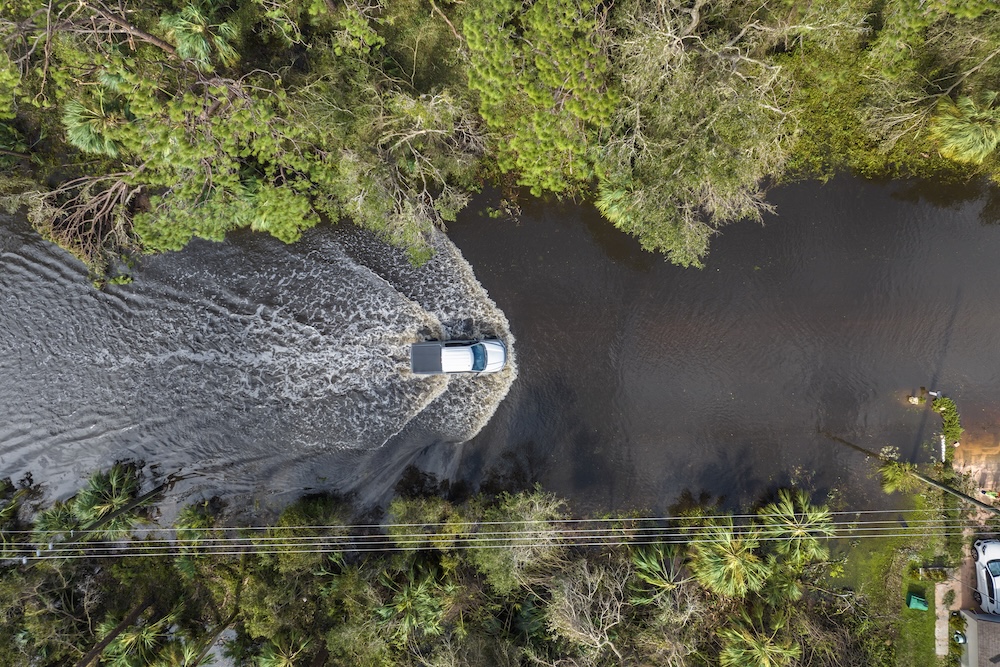Real Estate Is Evolving — And So Should You
You’ve probably heard it before: location, location, location.
But these days, that means more than good schools and walkable coffee shops. In 2025 and beyond, location also means flood zones, fire maps, elevation, and long-term climate stability.
Welcome to the era of climate-informed home buying — where smart buyers are asking not just can I afford this house now, but will I be able to insure it, sell it, or live in it safely 10 years from now?
If you’re buying property — especially near the coast, in wildfire country, or in extreme heat zones — here’s what you must consider.
Why Climate Risk Is Now a Dealbreaker (or a Dealmaker)
Until recently, most people didn’t factor in climate projections when buying a home. A beautiful neighborhood, reasonable price, and low taxes were enough.
But now? The climate is forcing its way into every part of the real estate transaction:
- Flood insurance premiums are skyrocketing
- Mortgage lenders are restricting loans on high-risk properties
- Buyers are demanding climate disclosures
- And homes in safer “climate havens” are gaining value rapidly
The consequences aren’t theoretical. Some buyers are finding out too late that their dream home:
- Floods annually (even outside of FEMA zones)
- Can’t be insured affordably
- Is losing resale value due to sea-level projections
- Needs costly adaptations like elevation, drainage, or fireproofing
A Smarter Approach: Climate-Informed Home Buying
Whether you’re a first-time buyer or a seasoned investor, factoring climate into your decision is no longer optional — it’s protecting your future.
To help, we’ve created a comprehensive checklist to walk you through every climate-related factor to evaluate before you buy.
The Smart Homebuyer’s Climate Checklist
Buy with confidence. Live with resilience.
Know the Risks Before You Buy
☐ Check the property’s flood risk
→ Use RiskFactor.com, FEMA maps, or your local GIS flood zone data.
☐ Check wildfire risk
→ Especially important in rural, forested, or drought-prone areas.
☐ Review heat exposure and cooling infrastructure
→ Does the area have a history of heatwaves? Does the home have AC and shaded areas?
☐ Check for long-term sea-level rise projections
→ Coastal homes may face erosion, high tide flooding, or inundation by 2050 or sooner.
☐ Research local infrastructure performance
→ Look into stormwater drainage, road flooding history, and sewer backups.
Evaluate Insurance & Financial Stability
☐ Get a flood insurance quote now — not after you fall in love
→ Risk-based premiums may surprise you.
☐ Check fire, storm, and erosion coverage availability
→ Some areas are becoming uninsurable by major providers.
☐ Ask your lender about climate-risk-based mortgage limitations
→ Some homes are no longer eligible for standard 30-year loans.
☐ Estimate costs for future-proofing
→ You may need to raise systems, seal crawl spaces, or invest in landscaping for flood/fire mitigation.
Assess Community Resilience
☐ Does the town or city have a climate adaptation plan?
→ Look for seawalls, green infrastructure, managed retreat programs, or wetland buffers.
☐ Is there visible local investment in resilience?
→ Check for upgraded roads, stormwater systems, or coastal restoration projects.
☐ What’s the elevation of the property and surrounding neighborhood?
→ Even small elevation changes can mean big differences in risk.
☐ Are utilities buried or exposed?
→ Underground systems are safer from wind and fire.
Ask These Questions During Your Tour
☐ Is there any visible water damage or erosion?
☐ Are utilities, HVAC, and electrical systems elevated?
☐ Has the home flooded before? How often?
☐ Is the lot graded away from the structure?
☐ Are nearby homes abandoned, listed often, or uninsured?
Plan for the Future
☐ Can you resell this home in 10–20 years?
☐ Will the area remain affordable as insurance, repairs, and heat increase?
☐ Is this an emotional buy or a resilient one?
☐ Would you want your kids or loved ones living here long-term?
Climate Risk Is the New Location
You don’t need to panic. But you do need to plan.
Climate-informed home buying isn’t just about risk — it’s about longevity, financial security, and peace of mind. Whether you’re settling down or building a portfolio, your next real estate move should work with the future — not against it.
Your home is more than walls and windows. It’s your shelter from the storm — literally.
So check the climate maps. Ask the hard questions. And make your move with open eyes.









Reader Interactions